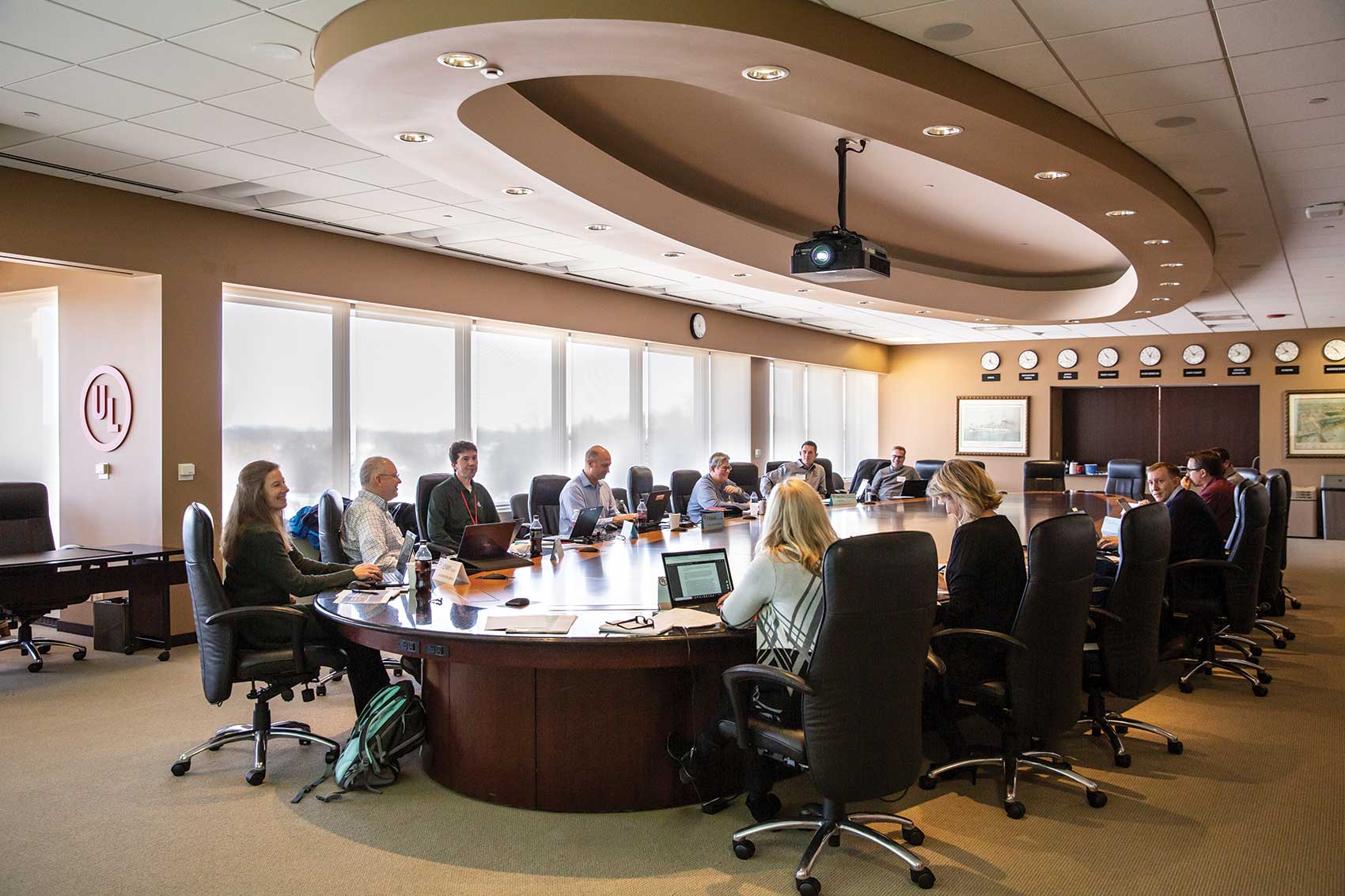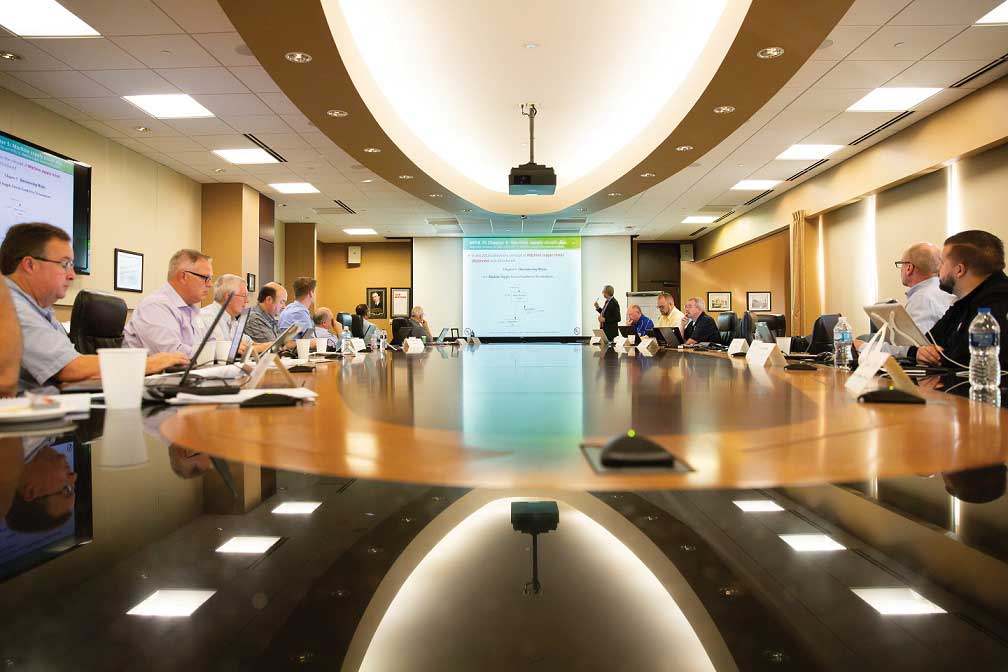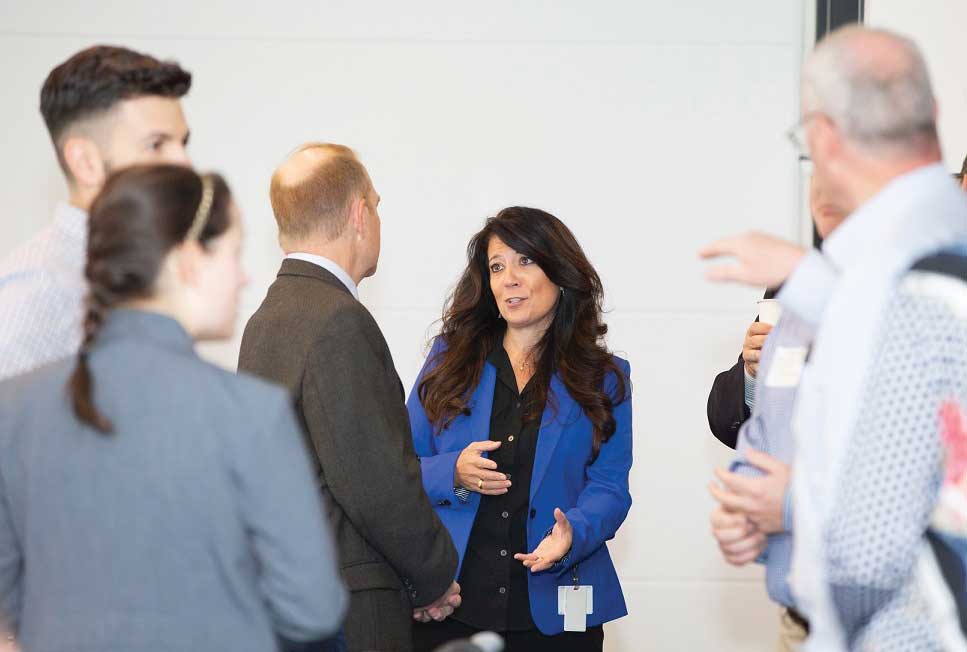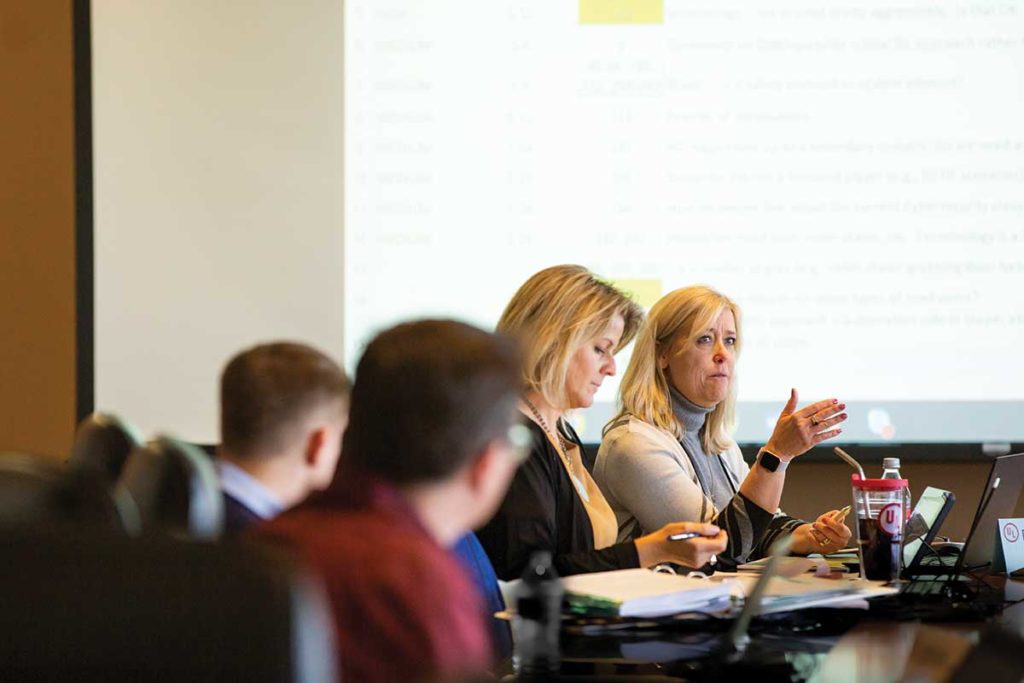Inspectors and contractors are critical stakeholders in electrical safety, with their input essential to the development and maintenance of safety standards developed in the United States and Canada. The National Electrical Code (NEC) states in Section 110.3 that product testing and listing shall be in accordance with applicable product standards for equipment installed to comply with the Code. Over three-hundred product standards are referenced in the Code with informational notes, and Annex A. Participation in developing and maintaining UL standards is just as critical as involvement in the NEC code-making process in ensuring safe electrical installations.
The NEC and UL Standards are the foundation of the work performed each day as an inspector or installer. Involvement in the standards development process allows participants to become a critical part of improving safety and also facilitates their professional growth. Membership in a UL standards panel can lead to NFPA code-making panel memberships, partnerships with other industry stakeholders, and increased access to resources that help address complicated issues in your daily job responsibilities. Participation in UL standards development is straightforward using UL’s online Collaborative Standards Development System (CSDS).
UL Standards needs the unique perspectives that electrical inspectors and contractors can bring to the standards development process. In turn, participation can offer multiple professional growth opportunities for those who volunteer.
UL Standards Technical Panels (STPs) and ULC Technical Committees (TCs)
Stakeholder input is an essential part of the process by which UL develops and maintains its standards. This consensus process is achieved via a group of individuals representing a variety of interests who are responsible for reviewing proposed standards or changes or additions to existing standards. UL Standards refer to these groups as standards technical panels (STPs), and ULC Standards (operating in Canada) refers to them as Technical Committees (TCs).
It is beneficial to have broad, diverse opinions and interests represented during standards discussions to maximize the standard’s effectiveness, applicability, and sustainability. Stakeholders typically include authorities having jurisdiction (AHJs), installers, manufacturers, retailers, consumers, trade associations, regulators and other authorities– and other varied and vested interests. This participation enables diverse interests to provide input, review proposals, and meet to discuss issues — all facilitated by UL’s standards development organization. Members represent a balanced group of interest categories, in which the goal is to have no interest group over one-third of the entire group. There is no cost to become an STP member.
In meeting the core elements of consensus standards development, anyone can apply to participate. Participation occurs through UL’s Collaborative Standards Development System (CSDS), which provides online access to review, comment, and submit proposals for UL’s Standards development process. General access to CSDS is also available for information on STP meetings, submitting proposals, and access to proposals. STP/TC membership is not required to participate. A non-member participates without voting privileges. STP/TC meetings take place on an as-needed basis to develop standards or review proposals. These can take place live or via teleconference.
Become a Standards Technical Panel Member
Membership in standards development activities provides you with insights into future requirements and improves your ability to assure compliant installations. This unique perspective provided early in standards writing activities is essential for the inclusion of appropriate provisions for installation instructions, markings, and nameplate information. Perhaps most importantly, your participation can reduce the risk of inadvertent oversights that impact installations.
Two questions are typically asked about panel membership:
How much time is involved in being a member? The best answer is that it varies and can be addressed by the STP’s project manager. Reach out to the project manager of the STP you are interested in and ask how much time is typically required to be a member of the STP. You may learn that the STP primarily meets online or simply with email correspondence. If there are face-to-face meetings, all proposed changes, comments, and voting are done online. The STP manager will be more than happy to address your concerns and questions on time commitment.
How do I apply for membership? To apply, go to the CSDS home page at csds.ul.com and select the link “Apply to be a member today!” found at the bottom of the page. Then select “UL STP Application” for US Standards or “ULC TC Application” for Canadian Standards. A seven-step application is required to be completed when applying. Before applying, you will need to determine the STP(s) you wish to apply for membership. To find information on STPs, go to the CSDS home page at csds.ul.com. Once on the CSDS home page, select “STP Info” from the top dropdown menu, and then select “Standards Technical Panel (STPs).” The “STP Chart” found here provides a complete list of UL Standards, the corresponding STP number, and if there is a current call for members. When applying for membership, you will also need to be prepared to describe your general knowledge and competence in the scope of the STP, provide the perspective you will offer, and submit a resume if available.
Participate without becoming an STP Member
If you are not ready to become a member or membership is full, there are other ways in which you can take an active role in the standards development process. You will be able to make proposals, provide comments, and attend meetings. This access is available after creating and logging into your free user account at CSDS.ul.com. These alternate means of participation include the following:
- Submit proposals for revising current standards via the “Submit a Proposal Request” link.
- Review and comment on proposals that are being considered by the STP. To receive proposals at no cost, select “View Proposals Available” from the “Proposals” drop-down menu. Once you find a proposal to review, click the proposal entry, and select “Obtain Proposal Access.”
- Request to attend meetings of the Standards Technical Panel by selecting “View Upcoming STP Meetings.”
- Volunteer to participate in a ULC technical committee subcommittee, task group, or working group. To volunteer, apply by completing the information requested via the “ULC TC Application” link. To access this link, select “STP Application” from the “STP Info” drop-down menu. These groups do not have the limitations of membership that apply to the technical committee.
Monitor Standards Development
Stay abreast of standards development via UL’s CSDS home page at CSDS.ul.com. Information is readily available without creating an account. Drop-down menus at the top of the page provide links to information such as Proposals, STP Info, and ULC Standards.
One of the most popular information pages is the STP Charts page available using the CSDS home page. Select “STP Info” from the top menu, then select “Standards Technical Panel (STPs).” You are now on the STP Charts page containing essential information about UL Standards in the US. This page contains a list of the nearly 400 UL STPs, the standards covered by each STP, project managers’ contact information, the STP application link, access to interest categories, scope information for each standard, and access to all STP rosters. You can easily search the page with a simple Ctrl+F.
Conclusion
As a valued contributor to safety in your community, do not overlook the opportunity to contribute to safety as an STP/TC member for UL and ULC standards. You bring a unique perspective to the group of individuals on the panel. You see first hand the problems associated with the installation of products and how changes to standards can improve or complicate the product’s installation.
Are you at the point in your career that you can gain more knowledge from being involved in the standards development process than with formal training? If so, take advantage of the opportunity to get involved. UL standards technical panels and technical committees need your expertise.
- To become a member, follow these simple steps:
- Select “Apply to be a member today!” at CSDS.ul.com
- Select “UL STP Application” or “ULC TC Application”
- Agree to Membership Responsibilities
- Select up to five STPs for membership
- Provide contact information and select an interest category
- Provide experience/qualifications
- Submit!
We encourage you to share your experience to support the development of electrical safety standards and, at the same time, increase your working knowledge of the products you inspect or install.
About Underwriters Laboratories
UL Standards is part of Underwriters Laboratories, a nonprofit organization dedicated to advancing the UL Mission through the discovery and application of scientific knowledge. We conduct rigorous independent research and analyze safety data, convene experts worldwide to address risks, share knowledge through safety education and public outreach initiatives, and develop standards to guide the safe, sustainable commercialization of evolving technologies. We foster communities of safety, from grassroots initiatives for neighborhoods to summits of world leaders. Our organization employs collaborative and scientific approaches with partners and stakeholders to drive innovation and progress toward improving safety, security, and sustainability.
We fund our work through grants, the licensing of standards documents, and the business activities of our affiliate, UL Inc., which also advances our shared public safety mission through its testing, inspection, audit, certification, validation, verification, advisory, and training businesses. To learn more about these business solutions, visit UL.com.
UL STP Membership Application Overview
Step 1: Accept Membership Responsibilities
The following are a few of the essential member responsibilities.
- Maintain Internet access. You will conduct your work through CSDS, UL’s web-based standards development system.
- Help draft requirements and participate in Task Groups that fall within your field of expertise.
- Review proposals and provide input through CSDS before announced deadlines.
- Vote through CSDS before announced deadlines.
Step 2: Select Specific Standards Technical Panels
- Apply for up to five STPs.
- Select “View current STP Rosters” to see a current list of STPs, Standards, and panel members.
- Find STP’s that have a Call for Members and interest groups needed, by selecting “Full List of STPs.”
Step 3: Contact Information
Provide contact information, which includes name, address, phone, and email.
Step 4: Are you a consultant?
If you are not applying as a consultant, then select “Next” to go to Step 5. If yes, then more questions.
Step 5: Interest Category
Please select one interest category.
- AHJ/Regulator
- Commercial/Industrial User
- Consumer
- General Interest
- Government
- International Delegate
- Producer
- Supply Chain
- Testing and Standards Organization
Step 6: Experience/Qualifications
The following information is needed to complete this step.
- Describe your general knowledge and your competence in the scope of work of the STP.
- Provide the perspective you will be able to offer to the work of the STP.
- Provide other relevant information that should be considered in evaluating your application, such as replacing an existing member that is no longer able to participate?
- Submit a resume, if one is available, detailing your work history experience and education.
Step 7: Agreement
Check the box for an electronic signature and the box for “I’m not a robot” and then select “Submit.” Your application is complete and submitted to the Project Manager and STP Chair.
Resources
- The UL’s Collaborative Standards Development System (CSDS) home page is available at
https://csds.ul.com - Standards Technical Panels (STP) looking for members and application for membership is available at: https://csds.ul.com/STPInfo/ApplicationHomePage.aspx.
- Ways to participate in UL’s Standards Development Process is available at:
https://ulstandards.ul.com/develop-standards/participation/ways-to-participate/ - STP Charts information is available at:
https://ulstandards.ul.com/develop-standards/stps/stp-charts/ - General CSDS process information is available at:
https://ulstandards.ul.com/develop-standards/csds/ - General STP information is available at:
https://ulstandards.ul.com/develop-standards/stps/ - General Interest category information is available at
https://ulstandards.ul.com/develop-standards/participation/interest-categories/ - General Membership Criteria is available at:
https://ulstandards.ul.com/develop-standards/participation/membership-criteria/


















Find Us on Socials